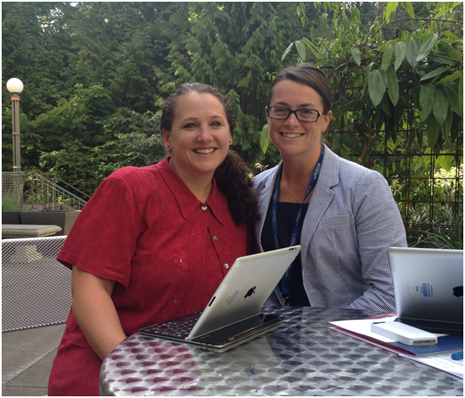We all know that one of the key ingredients in the special sauce of outstanding projects is strong leadership. The most successful John A. Hartford Foundation grants have thrived because of leaders who comprehensively identify and routinely assemble the key stakeholders of their work to form a committed team.
Strong leadership and team-building are even more essential at times of transition, such as with our academic geriatrics and training grant programs. After decades of funding schools of nursing, medicine, and social work to develop gero-expert faculty and change curricula, we have made final renewals to these academic centers and will be putting all of our resources toward directly changing health care delivery and practice. Many of these academic centers are working hard to sustain their programs with diversified fundraising strategies, including the excellent exemplars at Oregon Health & Science University’s (OHSU) Hartford Center of Gerontological Nursing Excellence.
 Cathy Kemmerer and Rachel Hitchcock, part of the collaborative development team at OHSU.
Cathy Kemmerer and Rachel Hitchcock, part of the collaborative development team at OHSU.I have always been impressed by the team at the OHSU Hartford Center because a vital member of their team has been the dedicated university development staff. For years, the Center leadership and these academic fundraising professionals have been working together to promote and sustain the work of the Hartford Center.
I recently submitted questions to OHSU Foundation’s Rachel Hitchcock, Director of Development, Provost and Schools, and Cathy Kemmerer, Director of Strategic Foundation Partnerships, Office of Corporate and Foundation Relations, to learn more about their best practices and what makes them so good at their jobs. Their thoughtful and insightful answers can serve as a guide to others in academic settings seeking to forge stronger relationships between a development team and project leaders that can help sustain valuable work for generations to come.
The development team at OHSU has a pioneering approach to working with the Hartford Center. Can you share some of your strategies for supporting their work and advancing your common goals?
“Common goals” is the most important aspect of that question. Together we developed our five-year plan for fundraising for sustainability of the Hartford Center of Gerontological Nursing Excellence. The plan is what we use to establish benchmarks for success and to guide activity.
One key component of this plan is evaluation. That old saying “what counts, gets measured; what gets measured, counts” is very true with regard to the relationship-building that leads to fundraising. In the last fiscal year, our development team set a goal to identify 10 major gift prospects for the Hartford Center through calls and meetings. We are glad to say that we met this goal! Now, the real work begins—engaging these new prospective donors in the meaningful work in geriatric nursing that is happening at the Center at OHSU.
Secondly, we view our work as engaging in partnership with funders. Our OHSU Foundation president, School of Nursing dean, and development staff have all visited the Hartford Foundation when business travels bring them to New York. We also worked with Hartford program staff to organize a donor cultivation dinner as part of our annual Hartford site visit, as well as a consultation visit as OHSU developed its Healthy Aging Alliance, which is related to but broader than the work of the Hartford Center. Our focus on the mutual goals we share with the Hartford Foundation broadly helps the Hartford Center for Gerontological Nursing and all of the university’s efforts to improve the health of older adults..
What do you consider some of the essential ingredients to maintaining a strong relationship with your Hartford Center? How do these contribute to success in fundraising and sustainability?
Our efforts are focused on three Ts … time, trust, team approach.
- Time. There is no substitute for the valuable relationships and trust established over the numbers of years the School of Nursing and Hartford Center faculty/leadership and OHSU Foundation’s staff/leadership have spent working together to advance aging initiatives. The development director and the Hartford Center director, Dr. Terri Harvath, meet monthly to check in and ensure our efforts remain aligned. Particularly in development, it is important that the relationships that have been built over time stay intact, and that newly hired staff prioritize spending time getting to know key people and understanding how they will work together.
- Trust. Over time and because of strong, two-way communication, our faculty and development teams trust each other; each person involved with the team understands and trusts in our colleagues to be the “expert” in the area they represent.
- Team. We know that our collective efforts benefit each of us. For example, Dr. Harvath shares insights with us when she has had a meaningful interaction or potential lead with prospective donors; likewise, we make sure to follow up with those potential leads and include Dr. Harvath in whatever subsequent meetings are scheduled.
Stay tuned to next week’s continuation of this interview with development staff at OHSU, partners in supporting the work of OHSU’s Hartford Center of Gerontological Nursing Excellence.
